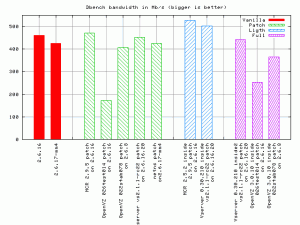
Dbench is a programming tool used to generate Input/Output workloads to either a specified filesystem or to a server terminal such as those that run on Network File System or the Common Internet File System. By generating I/O workloads, the dbench tool can help determine which part of the communication between input and output are saturated or not. The same dbench tool may also be helpful in determining the amount of running workload applications a particular server can handle. This feature makes dbench as important predictor tool for I/O workloads running on either an NFS or CIFS server.
The dbench tool may also be used to read SMBTORTURE related loadfiles and create a similar instance to the local filesystem. This emulation feature makes it easier to copy or mirror the input-output pattern of running programs and applications connected to the specified server. Another feature of dbench is that it also supports iSCSI or Internet Small Computer System Interface. This protocol is based on the standards set by IP or the Internet Protocol and allows easy communication between different data storage platforms and facilities. Through the iSCSI protocol, the dbench tool can make data transfer or communication in an intranet setup become smooth and efficient. File storage over a long distance is also not a concern with the help of dbench and iSCSI support.
The heart of the dbench tool relies on its loadfile system. Load files are basically data that can be organized and formed into databases. One statement is needed for each operations sequence. Commands will then be interpreted one at a time based on the data included in the loadfile system. Through this system, the dbench tool can then replicate the pattern of a running application and determine if it is running smoothly or if is very taxing on the server in terms of workload.










Leave a Reply